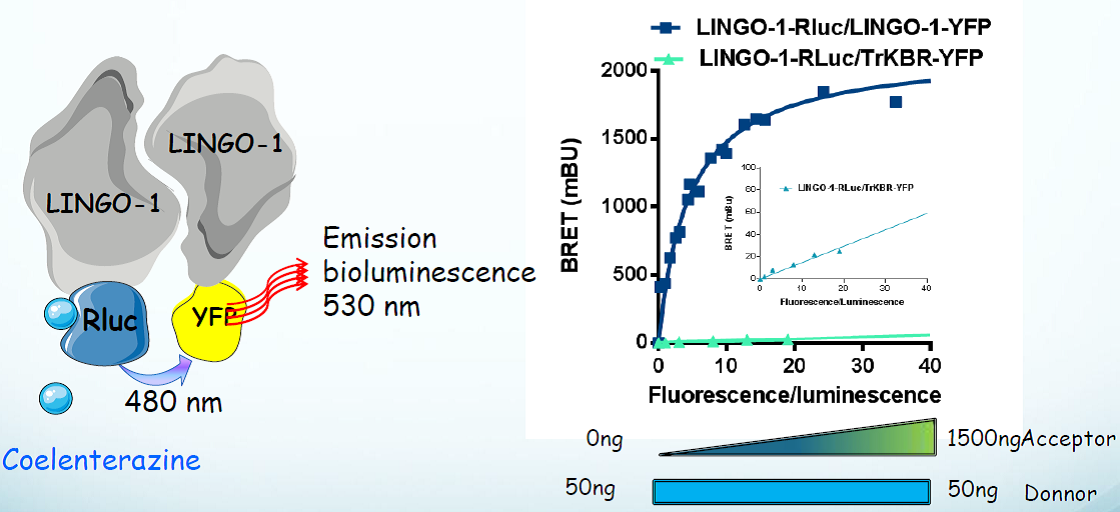High Throughput Screening of LINGO Ligands: A New Drug Discovery Tool for the Treatment of Neurodegenerative Diseases
Référence
03247-01
Mots-clés
Lingo, Parkinson, Nervous, Neurodegenerative, High Throughput Screening
Statut des brevets
French priority patent application n°FR1001364 filed on April 1st, 2010 and entitled “ Nouvelle méthode pour la recherche de ligands de Lingo-1, cible thérapeutique innovante pour la maladie de Parkinson.”
Inventeurs
Séverine MORISSET-LOPEZ
Hélène BENEDETTI
Statut commercial
Collaboration, Exclusive or non-exclusive license
Laboratoire
Centre de Biophysique Moléculaire (CBM), UPR4301, Orléans, France
Description
CONTEXT
Lingo-1 is a transmembrane protein preferentially expressed in the central nervous system (CNS) and most specifically in neurons and oligodendrocytes. It has been shown to negatively regulate different processes: (i) the growth of neurite and axons, (ii) the survival of different neurons, (iii) the differentiation of oligodendrocytes and myelinisation. In vitro and in vivo experiments have demonstrated that the inhibition of Lingo-1 is a promising and innovative approach to treat neurodegenerative diseases such as Parkinson’s disease, Alzheimer’s disease, Huntington’s disease, multiple sclerosis, and chronic glaucoma.
TECHNICAL DESCRIPTION
The invention relates to a screening method of Lingo’s inhibitors using the monitoring of conformational changes of Lingo-1, 2, 3 or 4 induced by the binding of potential ligands. This technology uses bioluminescence resonance energy transfer (BRET) technology and can be performed on living cells, membranes or cellular extracts in microplates. The BRETs induced by potential ligands are measured on a microplate reader and the assay has been applied to high throughput methods.

DEVELOPMENT STAGE
Stable transfected cell lines have been developed. The technology has already been tested and validated for high throughput screening.
BENEFITS
Actually, there is no simple method allowing the identification of ligands and antagonists of Lingo proteins. This BRET-based assay allows the screening of large libraries in order to identify new potential therapeutic compounds
INDUSTRIAL APPLICATIONS
By allowing the identification of putative Lingo antagonists, this invention will promote the emergence of drug candidates in the field of neurobiology, neurology and pharmacology and more specifically for treating demyelinisation, dysmyelination, and central nervous system diseases, such as multiple sclerosis. Additionally, Lingo-1 antagonists may have beneficial effects in disorders which relate to the death or lack of proliferation or differentiation of oligodendrocytes. Lingo-1 antagonists should also promote neurite outgrowth or survival of CNS neurons and might also constitute drug candidates in neurodegenerative disease such as Alzheimer’s disease, Parkinson’s disease or Huntington’s disease.
For further information, please contact us (Ref 03247-01)
Besoin de plus d'informations ?
Nous contacterTechnologies Liées
-
20.02.2014
New cellular and animal toxic model of Parkinson’s disease
Outils de recherche et criblage 05155-01
-
11.02.2014
The frequency of cellular nodules as a new marker for metastase in colorectal cancer
Outils de recherche et criblage 85349-01
-
04.10.2013
Method for screening anticancer substances, set or kit for implementing said method
Outils de recherche et criblage 86825-01